In the Halloween night sky you can expect nebulae, meteors, constellations and beautiful stars
Have you got any astronomy or stargazing sessions planned for Halloween?
If the conditions are clear, get outside and observe some of the scary night-sky objects perfectly placed at this time of year. You will be in for a creepy surprise or two, which younger astronomers will love.
From early evening through ‘til the morning there will be more treats than tricks, so wrap up warm with a flask of hot pumpkin soup, grab a telescope or binoculars, a star chart or smartphone astronomy app and set yourself up for a spooky night of observing.
If you do use your smartphone, Be sure to give your smartphone screen a red filter so as not to ruin your dark-adapted vision.
Ghostly nebulae and chilling constellations are yours to observe under a moonless sky.
Find out more about observing during autumn with our guide to the best autumn binocular astronomy targets, the best autumn constellations and our guide to autumn astronomy.
For more general advice, read our guides on how to stargaze and our pick of the best telescopes for kids.

Orion the Hunter, a giant huntsman hanging in the autumn sky, is poised with a bow taking aim at the nearby Pleiades (M45) open star cluster.
Rising in the eastern Halloween night sky from late evening, Orion reaches its highest point just after midnight.
The constellation is easy to find using your naked eye and if you have a pair of binoculars to hand then look south beneath his belt, the prominent line of three stars, and you will be able to make out the faint, colourless and ghostly Orion Nebula (M42), a popular pitstop for astronomers of all abilities.
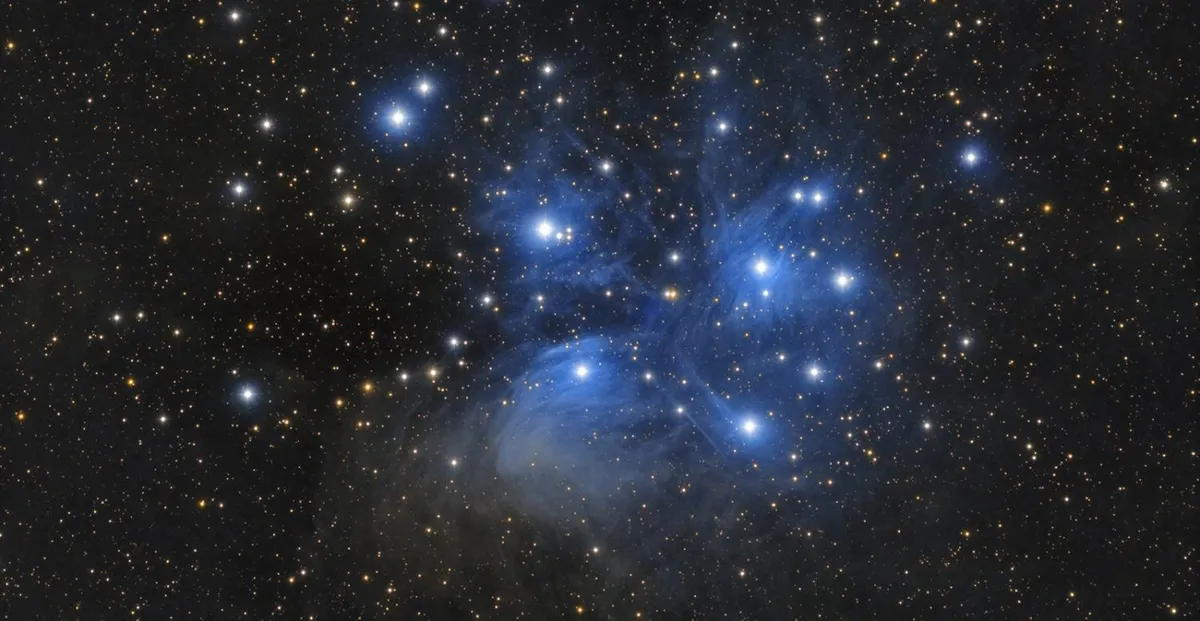
The fantastically named Witch Head Nebula (IC2118) located near Orion, situated within the constellation Eridanus (the river), is so called due to its image mirroring that of a witch’s face.
It is a billowing wisp of dust and gas known as a reflection nebula, lit up by Rigel (another naked-eye favourite), a hot blue star bigger than our Sun.
A tricky treat to view, the nebula is best observed in dark sky areas through telescopes with apertures of 10 inches and above.
This is a great Halloween night sky object, if you can find and observe it.
Rigel can be seen as Orion's right foot (from our perspective) and is the brightest star in the constellation.

Taurus, Orion’s next-door neighbour, holds many astronomical jewels. Aldebaran, a giant orange star forming the eye of Taurus is a great naked-eye object to observe.
Cooler than the Sun but approximately 144 times bigger, it hangs in the darkness like an orange beacon in the Halloween night sky. Stay within Taurus and locate the Crab Nebula (M1).
Giant ghostly crabs may sound like the stuff of nightmares, but through larger telescopes M1 appears as a wispy, ethereal jumble of gases. If you can photograph target this and process it at home, you will not be disappointed.

The Taurid meteor shower, brilliantly known as the Halloween Fireballs, will be visible in the Halloween night sky from the end of October to the beginning of December.
Best viewed before dawn, it is not the most productive shower compared to others we see throughout the year but due to the meteors bigger size and burning up deeper in Earth’s atmosphere, the viewing should be spectacular producing bright meteors and a few fireballs.
For more info about meteor showers and how to observe them, find out when the next meteor shower is happening
If you really want a hair-raising surprise, cast your eyes towards Perseus and locate Algol, also called the Demon Star, an eclipsing binary, three-star system whose brightness can change within just one evening.
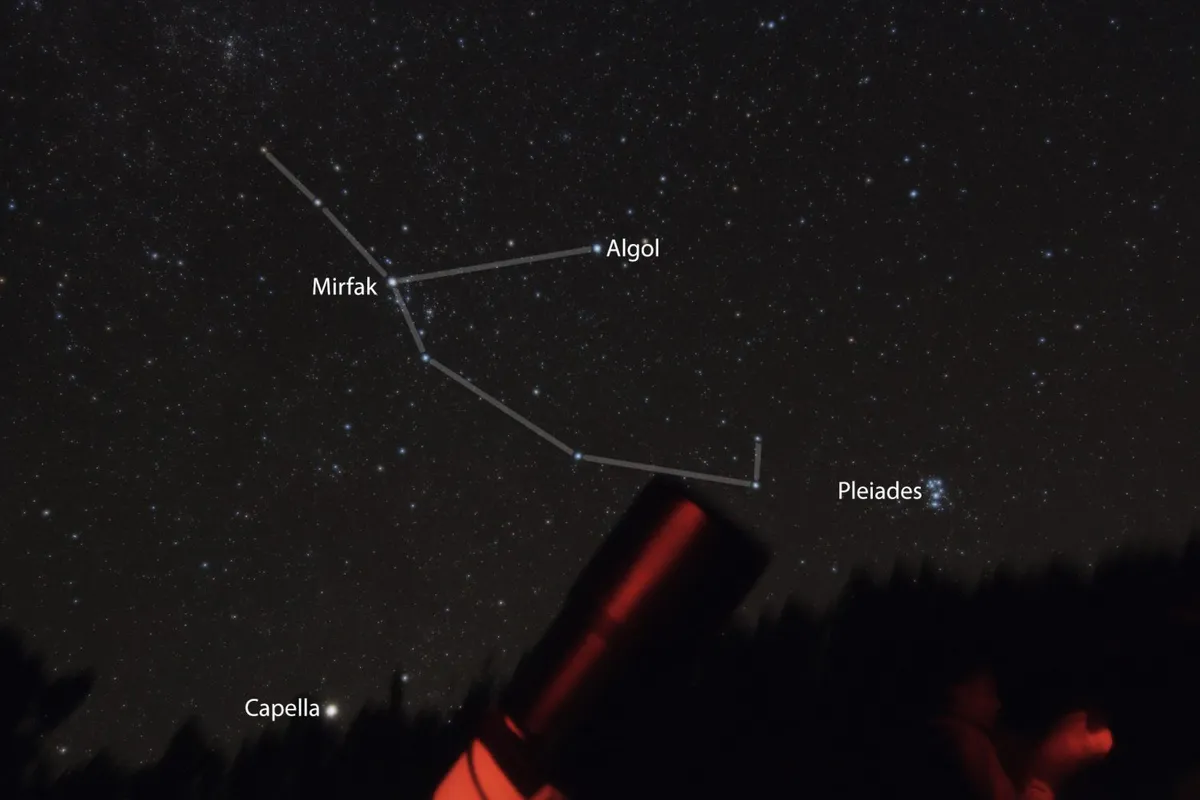
But the real gem in the Halloween sky is the Andromeda Galaxy (M31), the faintest object you can see with your naked eye.
Located next to Perseus in the constellation of Andromeda, this galaxy contains 4 billion stars and lies 2.5 million lightyears from Earth. It is theoretically possible to see the Andromeda Galaxy with the naked eye if your skies are dark enough, but through binoculars and small telescopes, it is a treasure not to be missed.
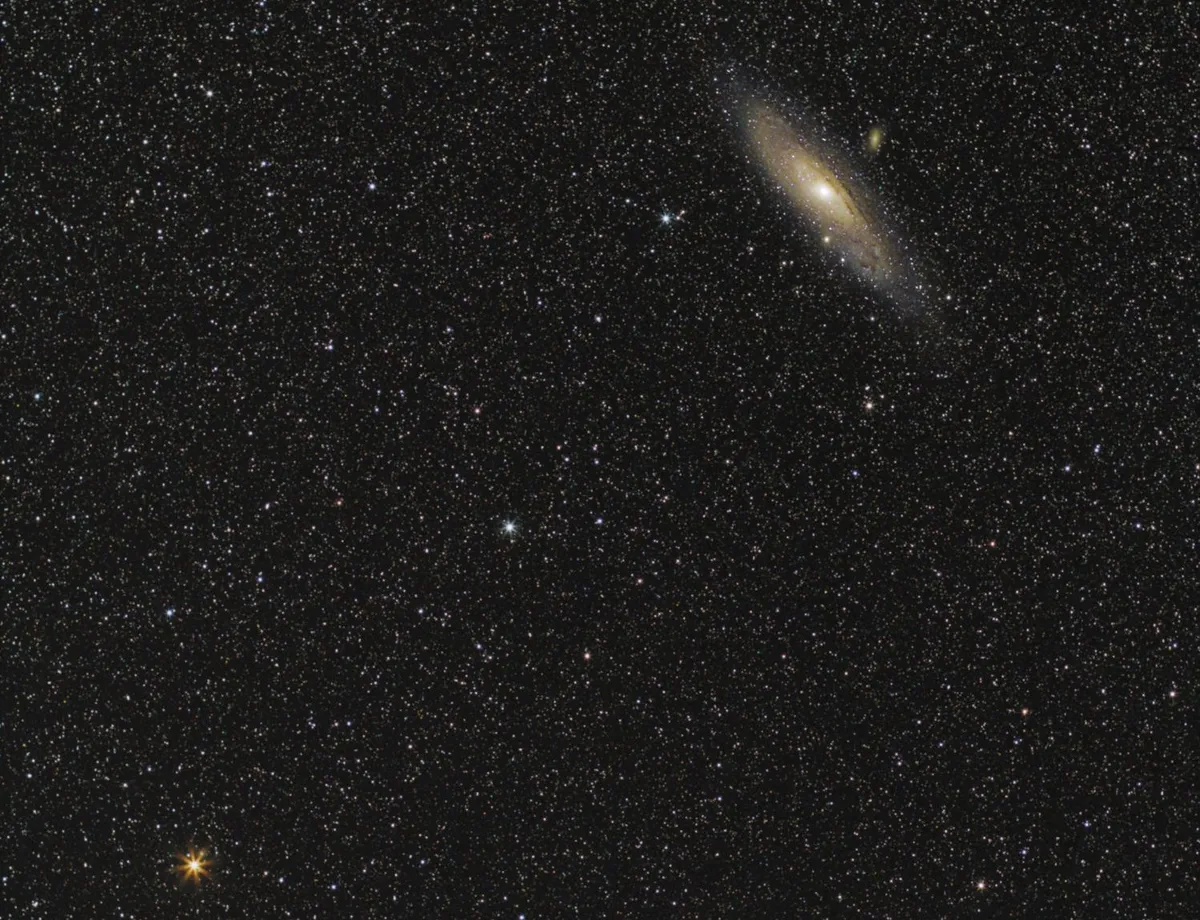
Rising in the northern sky is the constellation Draco, a giant dragon sweeping across the darkness winding its way from Ursa Major to Lyra (radiant of the annual Lyrid meteor shower).
Draco is a creature in a Greek myth that tells a tale of the dragon meeting a grisly end at the hands of Minerva who, upon his death, tossed him into the night sky where he froze in place and forms the constellation we see today.
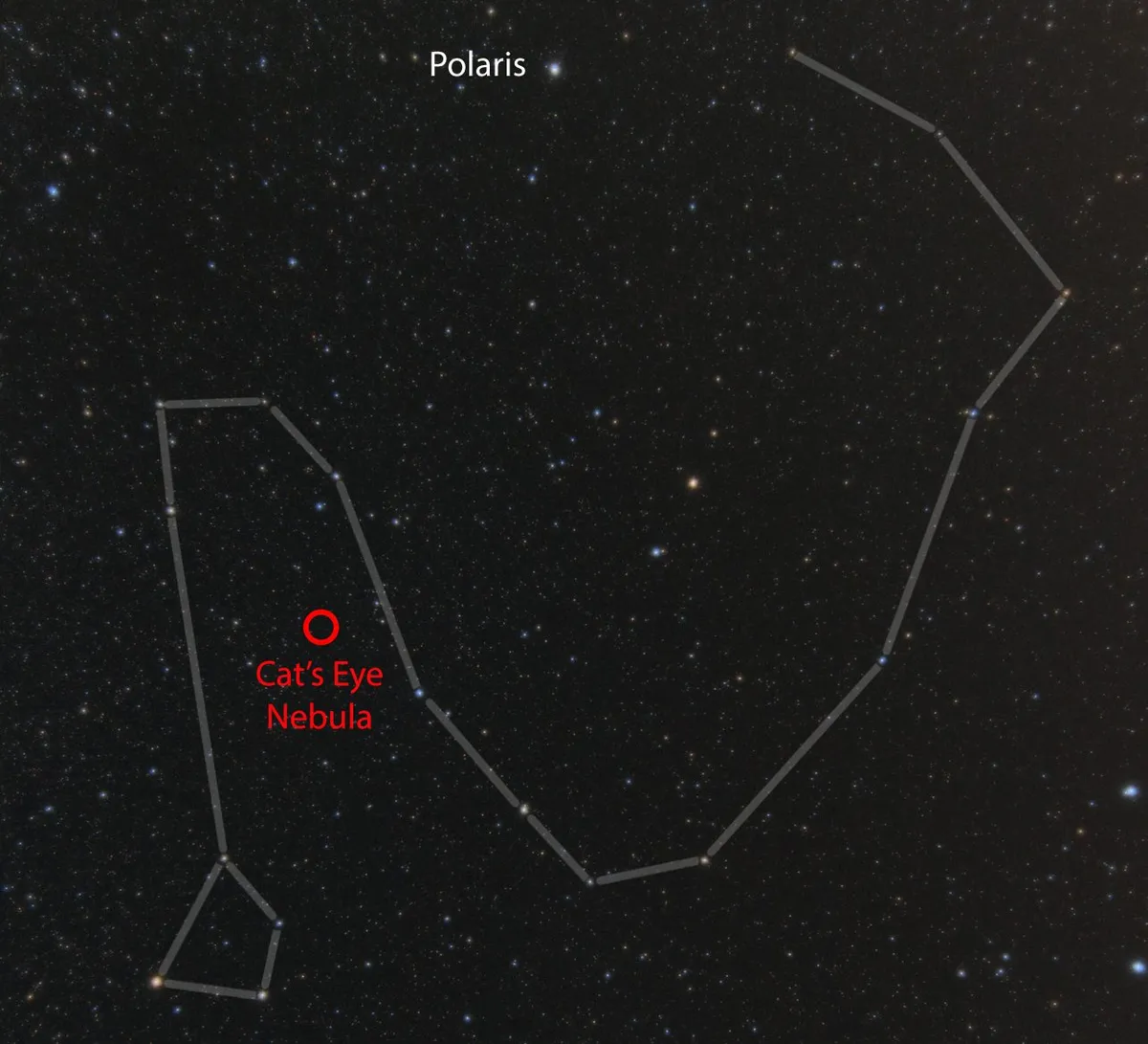
Staying within Draco, the Cat’s Eye nebula (NGC6543) can be seen through small telescopes. A bright planetary nebula, it is a favourite with astronomers. Through higher powered scopes, it appears as a blue-green disc and is certainly worth the challenging hunt.
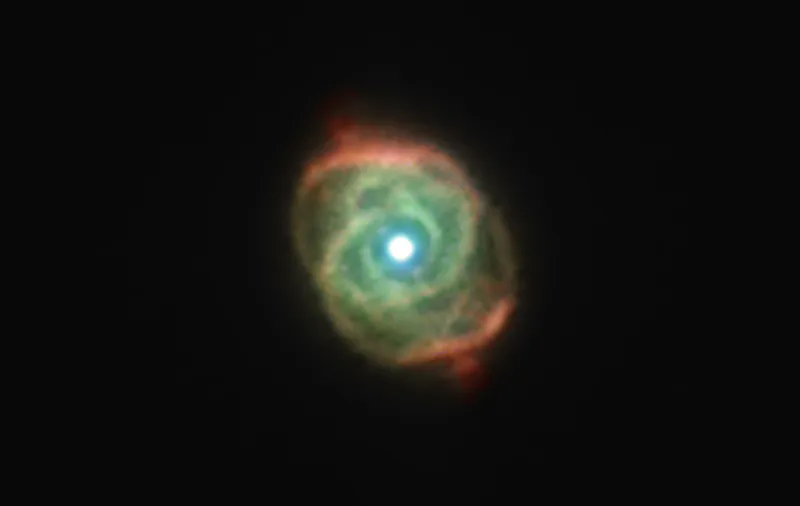
Star hopping from Draco to Ursa Major may require a little help from a star chart. Locate the star Edasich in Draco’s tail and bring your eyes south until they fall upon the famous asterism The Plough, which looks like a giant saucepan and forms part of the Ursa Major constellation.
Here, observers will get a startling surprise.Within the Great Bear itself sits an 8,000-year-old owl.
The Owl Nebula (M97) lies 2,030 light years from Earth and can be seen through telescopes of 8-inches and above in dark sky areas.
If you only have a pair of binoculars to hand, then keep an eye out for Bode's Galaxy (M81) in Ursa Major, a large spiral galaxy 12 million light years away with a super massive black hole for a heart.
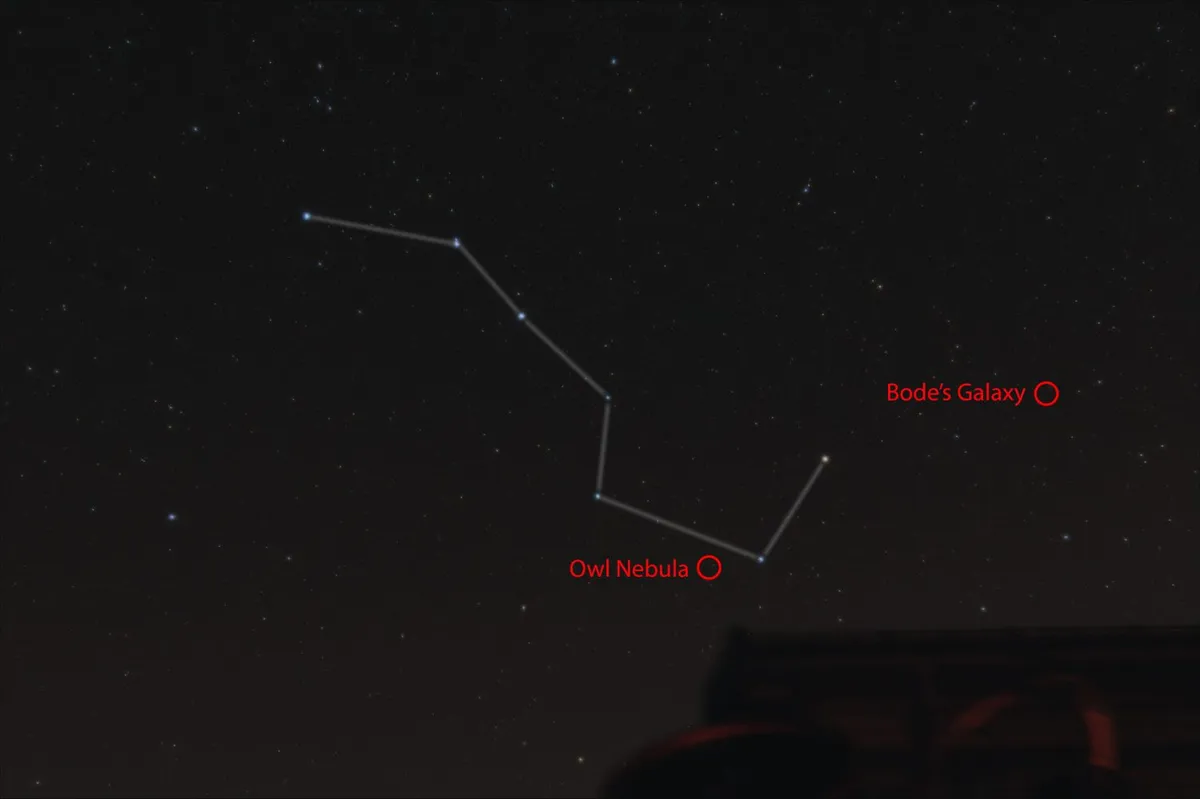
If you would rather spend the night hunting planets, read our guide to planet-hunting in October 2021.
If you are planning on spending a chilling night under the stars this Halloween, observing under a blanket of darkness, wrap up warm and don’t forget to keep looking up...and behind you!
Katrin Raynor-Evans is a fellow of the Royal Astronomical Society and the librarian at Cardiff Astronomical Society.
